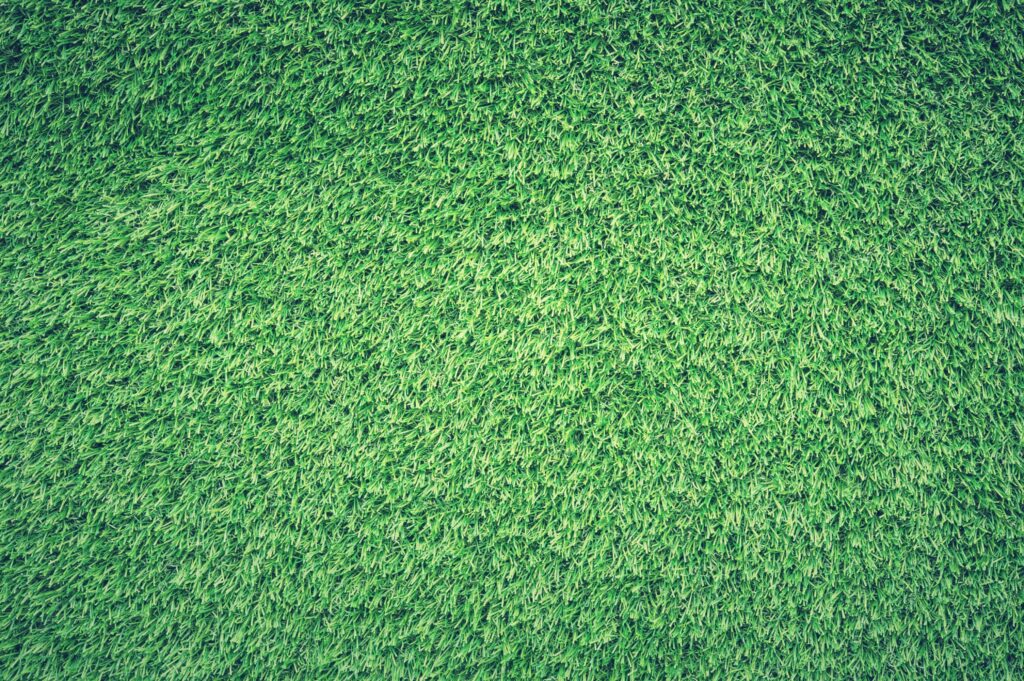Artificial grass has become a popular choice for homeowners seeking a low-maintenance, aesthetically pleasing alternative to natural grass. However, not all artificial turf is created equal. While premium options can provide years of durability and beauty, cheap artificial grass often fails to live up to expectations. To ensure you’re making a sound investment, it’s crucial to recognize the warning signs of low-quality turf. In this guide, we’ll outline the five key indicators of cheap artificial grass, helping you avoid costly mistakes.
1. Unnatural Shine and Gloss
One of the most apparent signs of cheap artificial grass is its unnatural shine. High-quality artificial turf is designed to mimic the appearance of natural grass, with a subtle, matte finish. In contrast, low-quality grass often has a noticeable gloss that gives it a fake, plastic look. This shine is typically due to the use of inferior materials, such as low-grade polyethylene, which reflects more light than higher-quality alternatives.
When examining artificial grass, look at how it appears under different lighting conditions. If the turf looks excessively shiny, especially in direct sunlight, it’s a clear indicator that the grass is of poor quality. This shine not only detracts from the natural appearance of your lawn but can also become a visual nuisance, especially on bright days.
2. Sparse and Uneven Blade Density
Blade density refers to the number of blades of grass per square meter. High-quality artificial turf will have a dense, even distribution of grass blades, creating a lush and full appearance. On the other hand, cheap artificial grass often has a sparse blade density, with noticeable gaps between the blades. This lack of density can lead to a patchy, inconsistent look that fails to replicate the rich appearance of natural grass.
To test the blade density, run your fingers through the grass and observe how easily you can see the backing material beneath the blades. If the blades are widely spaced or if the grass feels thin, it’s a sign that the product is of lower quality. Premium artificial grass should feel thick and robust, with blades that stand upright without any noticeable gaps.
3. Poor Quality Backing Material
The backing material is a critical component of artificial grass, as it provides the foundation that holds the blades in place. High-quality artificial turf typically uses a durable, multi-layered backing that offers both strength and flexibility. In contrast, cheap artificial grass often has a flimsy backing made from inferior materials, such as low-grade latex or polypropylene.
A poor-quality backing can lead to several issues, including wrinkling, lifting, and reduced longevity. Over time, the backing may deteriorate, causing the grass to separate from the base and creating an uneven surface. To assess the quality of the backing, inspect the underside of the turf. Look for a thick, sturdy backing with well-stitched seams. If the backing feels thin or tears easily, it’s a sign that the grass is of low quality.
4. Short and Inconsistent Blade Height
The height of the grass blades plays a significant role in the overall appearance and feel of artificial turf. High-quality artificial grass will have blades that are consistent in height, providing a uniform look and a natural feel underfoot. However, cheap artificial grass often has blades that are too short or uneven in height, resulting in a less realistic appearance.
When comparing artificial grass products, pay attention to the length of the blades. A good rule of thumb is to look for grass with a blade height of at least 30mm to 40mm, as this typically provides a more natural look. If the blades are noticeably short or vary in height, it’s an indicator that the grass is of lower quality. Inconsistent blade height can also affect the durability of the turf, as shorter blades may wear down more quickly with regular use.
5. Lack of UV Protection
Exposure to sunlight can cause artificial grass to fade and deteriorate over time. To combat this, high-quality artificial turf is treated with UV inhibitors that protect the grass from the harmful effects of the sun’s rays. These inhibitors help maintain the vibrant color of the grass and prevent the fibers from breaking down prematurely. In contrast, cheap artificial grass often lacks adequate UV protection, leading to rapid fading and degradation.
To determine if the artificial grass you’re considering has UV protection, check the manufacturer’s specifications or ask the supplier directly. High-quality turf should be explicitly labeled as UV-resistant and come with a warranty that covers fading due to sun exposure. If the grass does not offer UV protection or if the warranty is limited, it’s a clear sign that the product is of lower quality.
Conclusion: Choose Quality Over Cost
When it comes to choosing artificial grass for your lawn, playground, or sports field, it’s essential to prioritize quality over cost. While cheap artificial grass may seem like a good deal initially, it often leads to disappointment in the long run due to its poor appearance, lack of durability, and increased maintenance requirements. By recognizing the warning signs outlined in this guide—unnatural shine, sparse blade density, poor backing, inconsistent blade height, and lack of UV protection—you can make an informed decision and select a high-quality turf that will stand the test of time.
Investing in premium artificial grass ensures that you’ll enjoy a lush, natural-looking lawn that enhances your outdoor space and provides years of enjoyment. Remember, the initial investment in quality will pay off in the long run, saving you from the hassle and cost of replacing low-quality turf.

